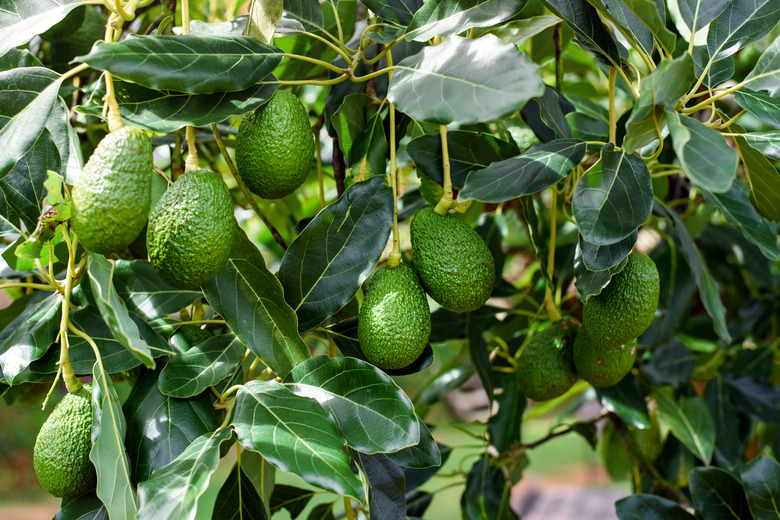Why Is My Avocado Tree Losing Leaves?
We may receive a commission on purchases made from links.
Avocado trees (Persea americana, USDA zones 10-12) flourish in warm locations that include Florida, southern Texas, California and Hawaii. Certain problems crop up in these areas that can cause the avocado's leaves to drop, notably mites and root rot. Knowing what causes these to occur, and figuring out how to prevent them, ensures a healthy, fruit-bearing avocado tree.
Tip
The most common reasons for an avocado tree to lose leaves are spider mites, which can be managed, and root rot, which is best avoided.
Why Avocados Lose Leaves
Why Avocados Lose Leaves
Persea mites attack avocado trees mainly in California. These mites have eight legs and an oval shape. Certain mites, such as the avocado brown mite and six-spotted mite, can cause occasional damage to avocado trees. Mites are most active during the spring and summer months. These tiny insects grow to only 0.01 inches and their coloration is a mixture of green and yellow. Oftentimes, they have up to six dark spots on their abdomen.
Phytophthora root rot is a large contributing factor to most of the problems that avocado trees face. Rehabilitating an avocado with root rot is difficult once the tree is diseased. Root rot forms in locations where there is overly moist soil and inadequate drainage.
Effects of Common Avocado Pests
Effects of Common Avocado Pests
Avocado trees displaying signs of root rot will have shrunken foliage and dropped leaves. Tiny roots affected by root rot appear weak, breakable and black in color. Affected avocado leaves curl into each other even when soil moisture levels are adequate. When mites feed on avocado trees, the leaves change over to a brown color before dropping off. Webbed veins can show up on damaged leaves before they drop.
Controlling Mites on Avocados
Controlling Mites on Avocados
Natural methods often control the spider mite population because other mites and insects are predators. Lady beetles, six-spotted thrips, and a variety of predatory mites will all cheerfully devour your pests. These predators help reduce the population of spider mites that are harmful to avocado trees.
Other methods of eliminating problematic spider mites include spraying the affected areas on the avocado tree with miticide. Removing as much road dust around the trees as possible will help reduce the amount of mites on the avocado. This is achieved by oiling or paving the roads leading to, and those in between, the orchards. Another way to tame road dust entails watering the dirt down with a water truck. Misting homegrown avocado trees reduces your chances of having issues with mites.
Treating Avocado Root Rot
Treating Avocado Root Rot
Start at the nursery to reduce the chances of the avocado tree becoming infected by root rot. Root rot tends to spread in plant and tree nursery stores. Select disease-resistant avocados. Use nitrogen in moderation to help prevent root rot. However, do not over-spray with fertilizer. Animal manure is not good for avocado trees because it contains ammonia and salt. The avocado roots are sensitive to ammonia and salt.
Indoor/Outdoor Avocados Losing Leaves
Indoor/Outdoor Avocados Losing Leaves
If your avocado is a potted specimen that lives outdoors in summer, comes indoors for the cold weather and drops its leaves when you bring it in, there's a simpler answer: You may be waiting too long to bring it in. Instead of waiting until there's a danger of frost, bring your avocado indoors when nighttime temperatures outside match those inside your house. That minimizes the shock to your avocado, and reduces the risk of it shedding its leaves.
